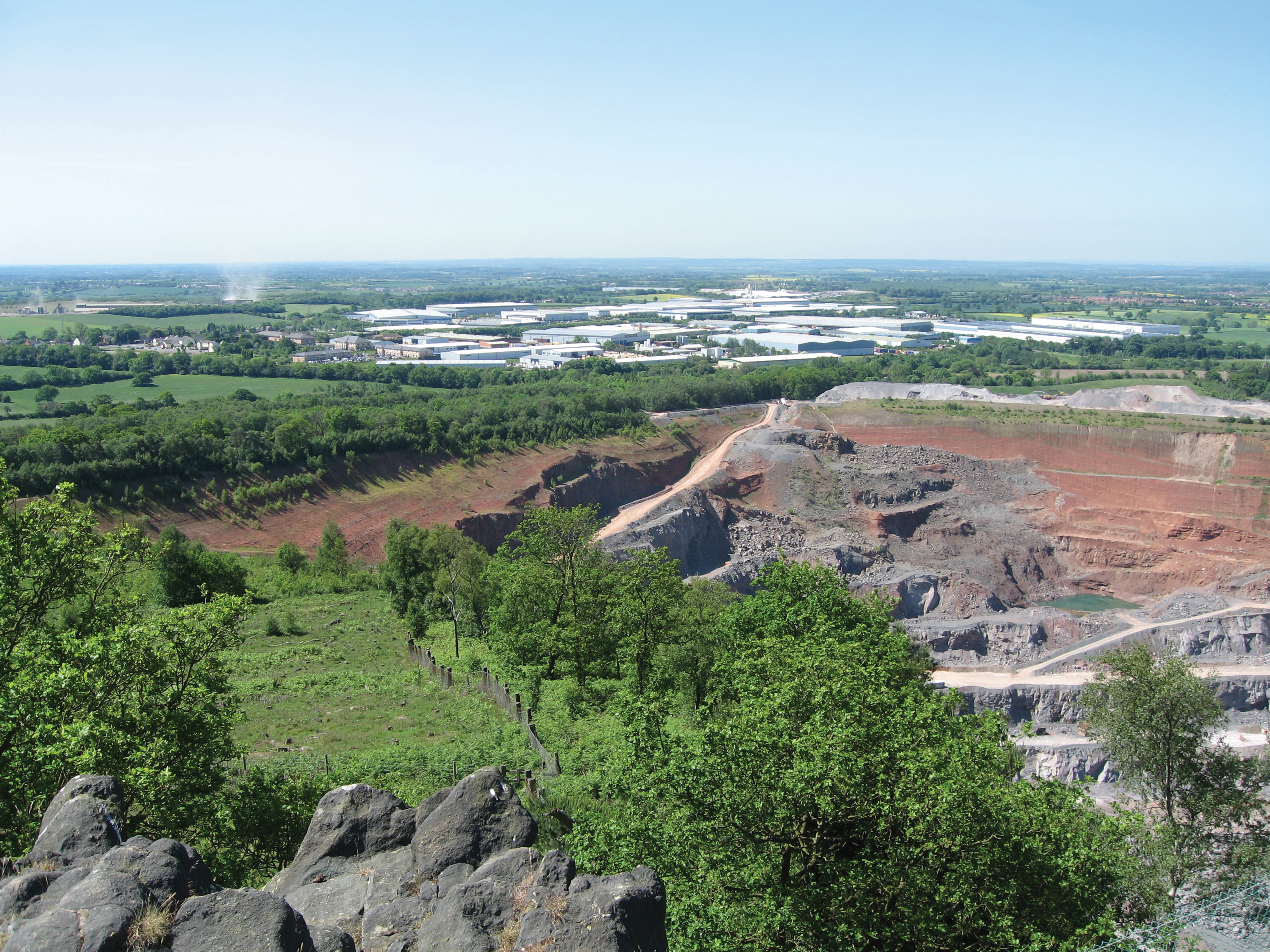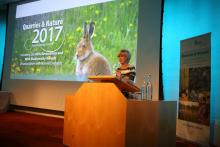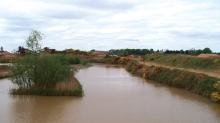
A biodiversity offsetting scheme is underway as part of a quarry extension which includes the removal of 20 million m³ of overburden. Patrick Smith reports
Rock and mineral extraction sites are often of great biodiversity and/or geodiversity interest. The particular interests and importance are dependent on a number of factors such as the local solid geology and drift geology, altitude, water table level and the type of restoration following excavation.
“Some old quarries resemble inland rock habitats with exposed, steep sloping rock faces and scree slopes.
Others have naturally re-colonised as grassland whose plant communities have been influenced by the exposed rock or quarry waste debris,” says UK-based The
“Barnack Hills and Hollows NNR [National Nature Reserve in County Cambridgeshire], for example, is a rich calcareous grassland formed over medieval limestone quarries. Where the excavation has remained inundated with water following excavation, a range of wetland habitats have formed. This is particularly common in former sand and gravel extraction sites in river valleys where the water table is high.”
Another interesting biodiversity site is in County Leicestershire where
The extension approval last year will see the 150-year history of the quarry continue to 2050 and beyond, securing 140 jobs directly and another 150 indirectly, as well as the wider future contribution to the local economy.
An extensive multi-faceted public consultation was carried out two years before the planning application was submitted, and this was seen as an important element of the application’s success.
Approved community benefits include greater public access over the Bardon estate, the provision of a visitor centre for geological, ecological and industrial education/interpretation, and commitment to a community fund.
Bardon Hill is of significant conservation interest and parts of the site contain geological and biological SSSIs (Sites of
Significant steps have been taken to minimise the environmental impact of the extension.
Indeed, SLR’s ecology and landscape designs team has been commissioned to help implement the scheme at Bardon Aggregate’s 160-hectare quarry near the town of Coalville. The extension will involve the removal of up to 20 million m³ of overburden and due to the sensitive location of the project site the landscape design is forming a key component of the development approach.
SLR’s scheme involves the creation of a new hill to the north of the future working area, which will accommodate all of the initial overburden and help to screen the new quarry.
Mirroring the landscape in the surrounding Charnwood Forest, the new hill will exceed 240m AOD (above ordnance datum) and cover 90 hectares. With the upper slopes restored to heathland and the lower slopes used for agriculture, the new landscape will be comparable with other local high spots in the National Forest.
SLR, an international environmental consultancy, based near Oxford, England, is now moving ahead with the detailed design which will involve the translocation of species rich hedgerows, lichen covered rocks and lowland wet grassland as well as the creation of critical habitats for protected species such as amphibians, badgers and bats and the creation of a Biodiversity Action Plan (BAP) for the whole estate.
“This project is a great example of how sensitive landscape design can help to overcome local concerns while also providing biodiversity enhancements,” says SLR principal Sarah Planton.
“Our scheme provides a complementary balance between the impact of quarrying on the landscape and allaying the concerns of local people.”
The whole estate includes nationally protected woodland and extensive agricultural land as well as the existing Bardon Hill Quarry.
Working closely with the in-house team at operators
Over 20km of hedgerow were also surveyed and a monitoring regime for important remnant grassland habits has been established.
The two-year public consultation programme allowed the teams to identify and address the community’s concerns. The design process is expected to take up to three years ahead of new excavation, and the implementation will be phased over the following decade.
Bob Edmonds, SLR’s principal ecologist, said: “The SSSI is the ancient heathland wetland and heathland that sits on Bardon Hill, which is one of the highest points in Leicestershire.”
Under the scheme some 1 hectare of wet grassland (just less than the size of a football pitch) will be trans-located and the ancient wetland on the site along with grassland will be extended.
“From an ecological perspective this is one of the most important parts of the scheme. This was a piece of land that had been used by many people and we discovered in 2005-2006 that this was a good example of this habitat type. It is a difficult habitat to create.”
It will be moved about 100m and it is hoped that it will retain much of its biodiversity as well as attracting new species.
“We will monitor this movement to see how it changes and put this monitoring back into our plans for managing it,” said Edmonds.
“We have said we will be using native species for tree planting. We will be trans-locating about 1km of hedgerow and this will restore the field pattern from the 18th century.
“The thing that makes this scheme different is its size.”
HeidelbergCement’s quarry awards
Last year for the first time
The international competition aims to find new ideas for the conservation and promotion of species diversity in quarries and gravel pits.
“Our company commits to promote the exceptional local flora and fauna in its more than 1,000 quarries and pits worldwide,” said Dr Bernd Scheifele, CEO of HeidelbergCement.
“We believe that research projects and ideas can raise the knowledge of the biological value of quarrying sites and thereby contribute to further protect and promote biodiversity. That’s why we launched the Quarry Life Award.”
Taking place in some 15 countries in Europe, Central Asia and Africa, students and scientists as well as cooperations with NGOs are participating, and until September, 2012, selected quarries and gravel pits in the participating countries will be open for the applicants’ best projects.
Projects submitted had to focus on discovering biodiverity in quarrying sites; biodiversity and rehabilitation; biodiversity and education, and biodiversity management during extraction.
After implementation of the projects on site, three winners per country and three global winners will be awarded prizes. National awards of €1,500, €3,000 and €5,000 as well as global awards of €10,000, €20,000 and €30,000 will be granted to the winners.









